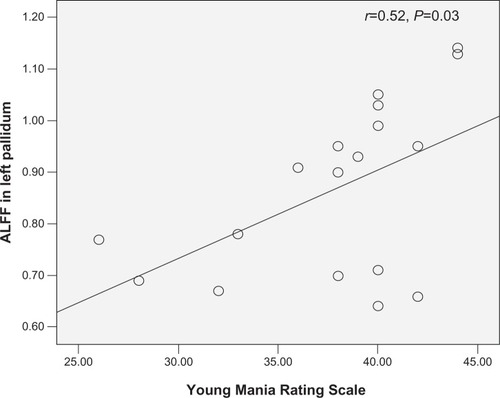Figures & data
Table 1 Participant demographic data in PBD (n=18) versus typically HC (n=18) subjects
Figure 1 Brain regions with increased/decreased amplitude of low-frequency fluctuation (ALFF) in pediatric bipolar disorder patients are superimposed on a T1 template.
Abbreviations: L, left; R, Right.

Table 2 Brain regions showing increased/decreased ALFF in PBD versus HC subjects
Figure 2 Scatter plots showing significant positive correlation between total Young Mania Rating Scale scores and regional amplitude of low-frequency fluctuation (ALFF) values in the left pallidum in pediatric bipolar disorder patients (P<0.05).

Table 3 Brain regions with significant between-group differences in ALFF and YMRS
